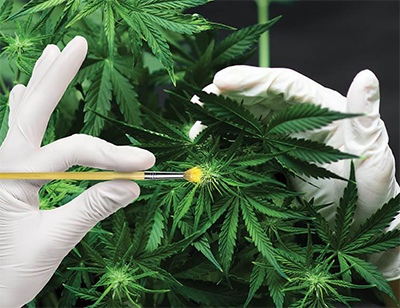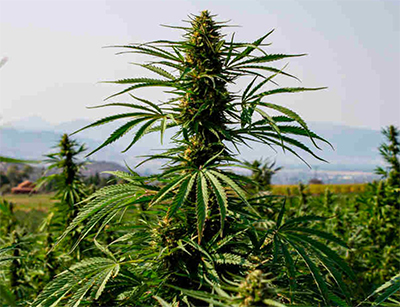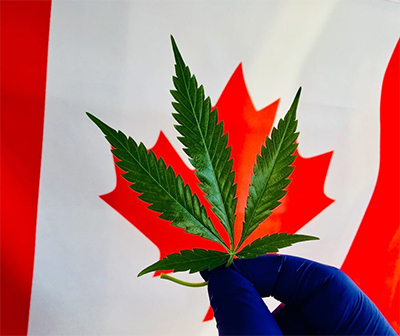Cannabis enthusiasts often marvel at the unique aromas, flavors, and effects of their favorite strains. But behind every iconic strain lies a fascinating science: genetics. The meticulous crafting of cannabis strains involves understanding and manipulating the plant’s genetic makeup to achieve specific traits. Let’s explore how genetics shape cannabis strains, their evolution, and their impact on the modern market.
What Are Cannabis Genetics?
Cannabis genetics refer to the DNA and traits inherited by a cannabis plant from its parent strains. Like all living organisms, cannabis plants carry genetic information that dictates their physical characteristics (phenotype) and biochemical makeup (chemotype). These factors determine everything from the plant’s size and yield to its terpene profile and THC/CBD content.
Strains are typically classified into three broad categories based on their genetics:
- Indica: Known for their relaxing effects and stocky, bushy growth.
- Sativa: Characterized by energizing effects and tall, slender growth.
- Hybrids: Crosses of indica and sativa genetics, tailored to combine desirable traits from both.
The Art of Breeding
 Crafting a new strain is an intricate process. Breeders select two parent plants with specific desirable traits—such as high THC content, unique flavors, or resistance to pests—and cross-pollinate them.
Crafting a new strain is an intricate process. Breeders select two parent plants with specific desirable traits—such as high THC content, unique flavors, or resistance to pests—and cross-pollinate them.
The resulting seeds are grown and evaluated to identify plants that express the desired combination of traits. These standout plants are then backcrossed or stabilized over several generations to create a consistent strain that replicates the same qualities each time it’s grown.
Key Factors in Genetic Crafting
- Cannabinoid Profile
Cannabinoids like THC, CBD, and CBG are crucial to a strain’s effects. Breeders aim to achieve specific cannabinoid ratios to cater to various consumer needs, from recreational highs to medicinal relief. - Terpene Expression
Terpenes are aromatic compounds responsible for the flavors and scents of cannabis. For example, limonene produces citrusy notes, while myrcene delivers earthy, herbal undertones. Terpenes also contribute to the entourage effect, influencing how cannabinoids interact with the body. - Yield and Growth Traits
Breeders often aim for higher yields, shorter flowering times, or plants that thrive in specific climates. These genetic improvements make cultivation more efficient and sustainable. - Disease Resistance
Incorporating genetics that resist mold, pests, or harsh weather ensures healthier plants and reduces the reliance on pesticides.
Heirloom Strains and Landraces
 The cannabis we enjoy today has roots in heirloom strains and landraces.
The cannabis we enjoy today has roots in heirloom strains and landraces.
- Landraces are cannabis plants that evolved naturally in specific geographic regions, such as Afghan Kush or Durban Poison. These strains are genetically stable and adapted to their environments.
- Heirloom strains are landraces that were cultivated outside their native regions, often maintaining their original genetics.
Modern breeding often starts with these genetic foundations to create innovative new strains.
Iconic Strains and Their Genetics
Some of the most beloved cannabis strains owe their fame to meticulous breeding:
- Blue Dream: A hybrid of Blueberry (indica) and Haze (sativa), known for its balanced effects and sweet berry flavor.
- Girl Scout Cookies (GSC): Created by crossing OG Kush and Durban Poison, GSC boasts high THC levels and a dessert-like aroma.
- Sour Diesel: A potent sativa-dominant strain with pungent, fuel-like aromas, bred from Chemdawg and Super Skunk genetics.
The Role of Phenotypes and Genotypes
In cannabis breeding, the terms genotype and phenotype play a significant role:
- Genotype: The genetic blueprint of a plant. It determines the range of traits a strain can express.
- Phenotype: The physical manifestation of a plant’s genotype influenced by environmental conditions like light, temperature, and nutrients.
For example, two plants from the same strain might look and smell slightly different due to varying growing conditions. This diversity makes small-batch cannabis and craft cultivation especially unique.
Genetics and Legalization
 The legalization of cannabis has fueled an explosion in strain development. Growers and researchers are experimenting with genetics to:
The legalization of cannabis has fueled an explosion in strain development. Growers and researchers are experimenting with genetics to:
- Enhance therapeutic benefits for medical patients.
- Develop low-THC, high-CBD strains for non-psychoactive use.
- Cater to niche markets with strains boasting novel flavors and effects.
Additionally, legalization has encouraged more robust genetic documentation and protection, with breeders patenting new strains to safeguard their intellectual property.
Modern Techniques in Cannabis Breeding
- Cloning
Cloning involves cutting and growing a genetically identical copy of a parent plant. This ensures that desirable traits are consistently reproduced. - Genetic Testing
Advanced DNA analysis allows breeders to predict a plant’s cannabinoid and terpene profiles before it matures. This technology accelerates the development of new strains. - Tissue Culture Propagation
This cutting-edge method involves growing cannabis cells in a lab to produce healthy, disease-free plants. It’s becoming increasingly popular for preserving genetics.
Consumer Impact: Why Genetics Matter
Understanding genetics helps consumers make informed choices about the strains they buy. Whether seeking relaxation, focus, or creativity, knowing a strain’s genetic lineage provides insight into its effects.
Additionally, genetics contribute to the diversity of cannabis products available today, from flowers and concentrates to edibles and topicals.
The Future of Cannabis Genetics
As cannabis research continues to evolve, so will the possibilities for genetic innovation. The future may bring:
- Strains tailored to specific medical conditions.
- Cannabinoid profiles designed for personalized experiences.
- Greater sustainability in cultivation through genetically optimized plants.
The ongoing exploration of cannabis genetics ensures that the plant remains a dynamic, ever-evolving part of human culture and wellness.
Conclusion
The cannabis strains you love wouldn’t exist without the art and science of genetics. Breeders continually push the boundaries to create new experiences for consumers, blending ancient wisdom with modern technology. Whether you’re enjoying a fruity hybrid or a potent landrace, you’re benefiting from a rich genetic history—and the future promises even more exciting innovations.

